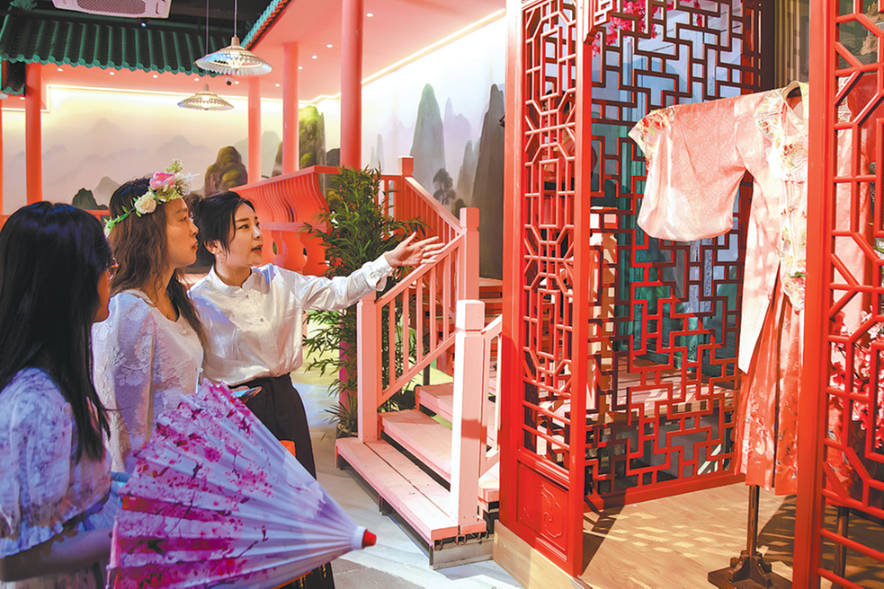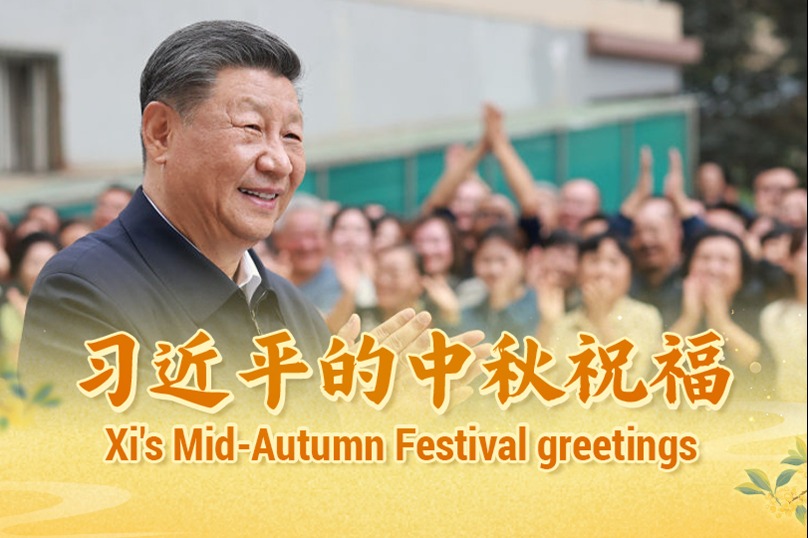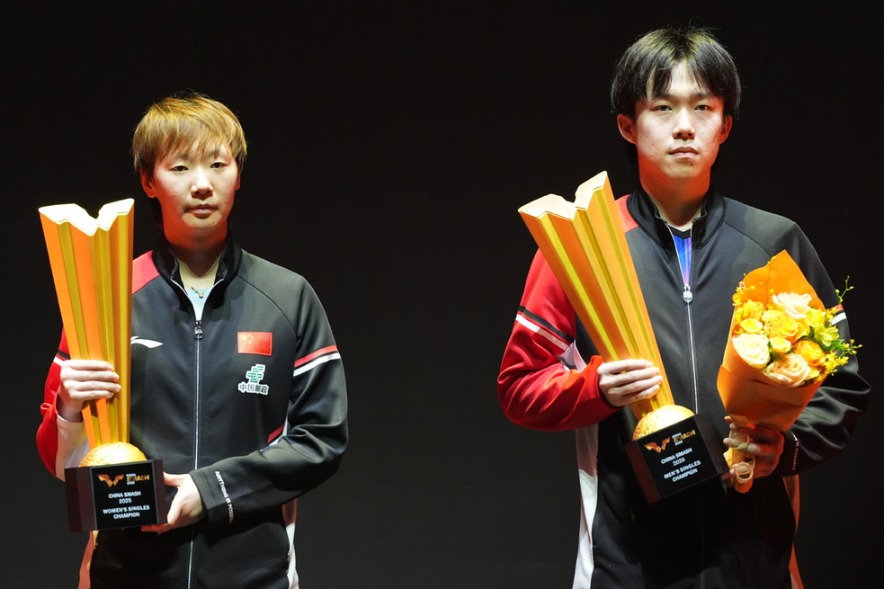Stepping back in time to examine footwear

|

The "horse-hoof shoe" worn by Manchu women in the Qing Dynasty has a long history in China. [Provided to China Daily]
|
The Victoria and Albert Museum in London displays Manchu women "horse-hoof" shoes from the Qing Dynasty (1644-1911), the last empire in China's history.
Supported by a wooden heel, the shoe has a slightly curved "horse-hoof" (mati) shape.Each "horse-hoof" shoe contains a fabric upper, which is often made of silk, featuring embroider. The heel, covered by hemp and padded with layers of cotton, shows that the shoe would have been worn indoors or only on special occasions. Even though the toes are slightly pointed, the right and left shoes are interchangeable.
For a long time, the footwear worn by Manchu women has been ignored or regarded as invisible under their qipao, or long robe, which has become a Chinese icon. Western scholars and collectors have paid high attention to the Han Chinese footbinding shoe rather than the naturally sized Manchu "horse-hoof" shoe.
However, the shoe has a long and complex history in China. The Manchu women's shoe also had an influence on the Han people's traditional footwear because of an interactive acculturation between the Manchu and Han people's cultures.
Date: Ongoing
Venue: Victoria and Albert Museum, London
Website: www.vam.ac.uk
Today's Top News
- Diplomatic window for peace in Gaza reopens
- Beijing, Dhaka to accelerate cooperation
- Japan braces for shift to conservatism
- Cultural, sports events boost holiday spending
- White goods, electronics hot items in holiday
- Strong typhoon triggers safety measures in south






























